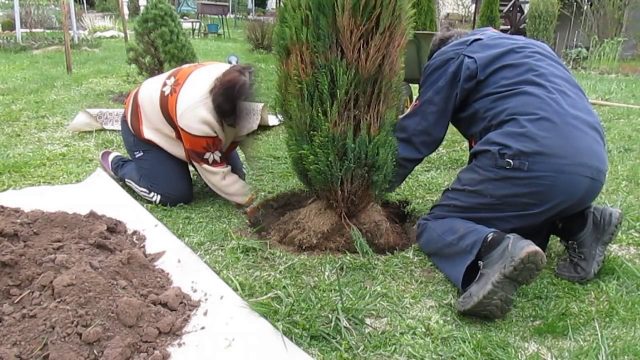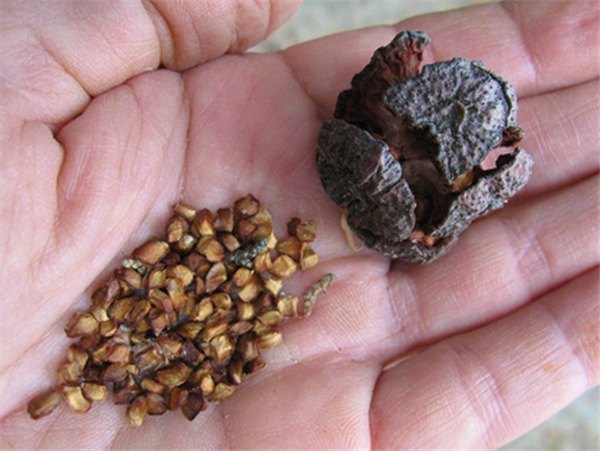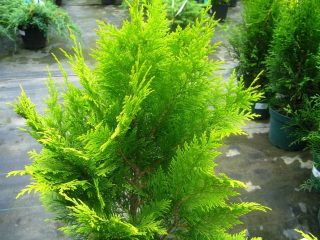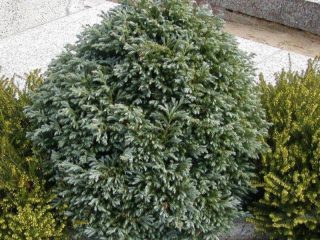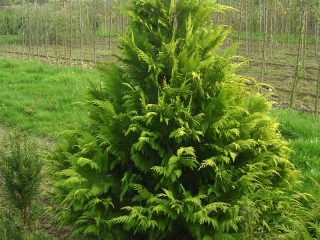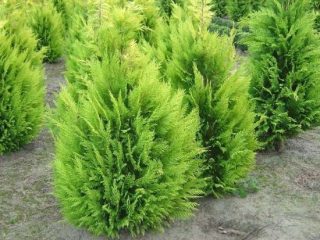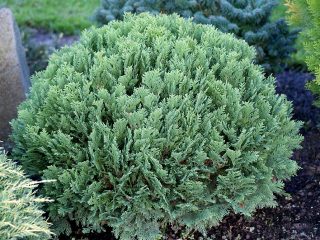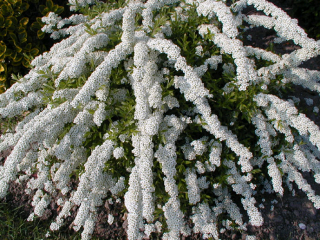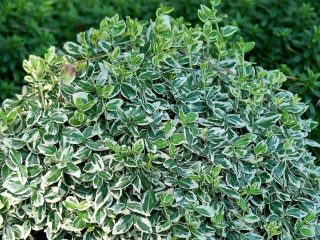Content
Lawson's cypress Columnaris is an evergreen coniferous tree that is often used to create hedges. The plant is beautiful, but not as easy to grow as it seems. Lawson's cypress requires a lot of attention from the gardener and special care.
Description of cypress Lawson Columnaris
The cypress is native to North America. In its natural habitat, it can be found in the mountain valleys of the states of California and Oregon. Lawson's cypress became the progenitor of the varieties Columnaris and Columnaris Glauka.
Lawson's cypress Columnaris is an erect evergreen tree up to 5 m high, less often up to 10 m. The crown is narrow, columnar. Shoots are elastic, thin, grow straight up. The branches are short - up to 10 cm, densely arranged. The needles are scaly, green-brown, pressed tightly to the shoots. Lawson tree with strong roots and good growth. Annual growth is 20 cm in height and up to 10 cm in width.In a short time, the crown grows up to 2 m in diameter.
The Columnaris Glauka variety is distinguished by the color of the needles. Scales of a bluish-blue hue, turn gray in winter. The tree grows quickly, in a year it gains up to 15-20 cm in height, in breadth - only 5 cm. An adult tree reaches 10 m. The crown is dense, dense.
Lawson's cypress is not frost-resistant, so it is difficult to grow it without additional shelter on the territory of the Russian Federation. The plant thrives only in the southern regions. In addition, an evergreen tree is demanding not only on the climate, but also on the soil.
Planting and caring for the Columnaris cypress
Lawson's cypress tolerates air pollution well, it can be grown in urban conditions. The tree is wind-resistant, prefers well-lit areas or partial shade. In full shade, the shoots thin out, the crown becomes loose. The plant may become bald on one side.
For planting, seedlings of Lawson's cypress tree Columnaris are best bought in containers. Thus, trees adapt faster to a new habitat.
Location
Lawson's cypress is a moisture-loving plant, especially the Columnaris Glauka variety. Trees do not tolerate drought, but you should not overmoisten the soil either. For planting, you need to choose a bright place, but without direct sunlight. Lawson's cypress does not like strong winds, which dry it out, so they place the seedling in a secluded corner of the garden.
The soil
Lawson's cypress is especially demanding for the soil. It can be successfully grown only on moisture-consuming fertile soils, acidic or neutral reaction. Lime-rich soil is not suitable for planting.
The Columnaris cypress is planted in early spring, the site is prepared in the fall:
- In October, they dig up the soil well, remove weeds, and introduce mineral complexes.
- A planting pit is made with a diameter of 60 cm, its depth is at least 90 cm.The bottom is well drained with expanded clay or brick chips to a height of 20 cm.
- The well is filled with nutritious soil, pre-mixed with mineral fertilizers. Peat, humus, turf soil and sand are added. The components are mixed in a ratio of 2: 3: 3: 1.
- For the winter, the pit is covered with a foil so that the soil is well rewound and settled.
If time is lost, then you need to prepare a landing site according to this plan 14 days before the proposed work.
Landing rules
The Lawson cypress seedling is inspected and prepared before planting:
- The roots should not be dry or bare.
- The shoots are normally flexible, elastic, bright in color.
- The plant, together with a lump of earth, is placed in water so that the roots are well saturated with moisture.
After these manipulations, they begin to plant the Californian cypress Columnaris. The seedling is carefully placed in the pit, covered with soil. If several plants are planted, then between 1 and 4 m are left between them.When creating a hedge, the distance can be reduced to 50 cm.
Watering and feeding
Immediately after planting, the seedling is watered abundantly. The soil around it is mulched with dry sawdust, humus or bark. In the future, watering the Lawson cypress is carried out as needed. As a rule, the soil is moistened at least once every 7 days. Up to 10 liters of water are consumed per adult plant. Young seedlings are watered more abundantly during the period of active growth, especially if it is hot. However, unlike old trees, they only need 5 liters of water per plant.
Lawson's cypress responds well to spraying, which helps maintain the required level of humidity. After planting, the seedlings are sprayed daily until they take root. In the future, it is enough to moisten the crown once a week.
Columnaris cypress is fed only in spring and at the very beginning of summer. In other periods, fertilization is not applied, otherwise the tree will not have time to prepare for winter. They are fed according to the scheme:
- young seedlings - 2 months after planting;
- mature plants every 2 weeks as they grow.
Use special formulations for coniferous and evergreen trees. For feeding recently planted plants, the concentration is made 2 times less.
Loosening and weeding
These procedures are mandatory for the Columnaris cypress. Loosens the soil after each watering or rain. She must always remain in this state. But you need to loosen carefully, since the roots of young plants are close to the soil surface.
Weeding and fighting weeds the cypress is vital, as it does not tolerate such a neighborhood. From the abundance of weeds, the tree often gets sick and is affected by pests.
Pruning
The procedure is started in the 2nd year of cultivation in early spring. Before the very beginning of active growth, dry and damaged shoots are cut out, the rest are shortened by a third. Lawson's cypress tolerates crown formation well; branches growing in the wrong direction can be removed.
Preparing for winter
Lawson's cypress is well covered for the winter. First, the crown is pulled together with twine, and with the onset of stable cold weather, it is covered with a special film or spunbond. In winter, the tree is additionally insulated with snow.
Reproduction of the Lawson cypress plant Columnaris
Lawson's cypress can only be propagated in 2 ways:
- seeds;
- cuttings.
Both methods have their own peculiarities that need to be kept in mind.
Seed propagation of Lawson's cypress is a complex process. Seed material from the Kolumnaris variety can be collected independently, as shown in the photo.
However, seeds need stratification for germination:
- In February, the seeds are soaked in a growth stimulator for 8 hours, after which they are planted in wet river sand.
- The pot with plantings is removed to a cold place where the temperature does not rise above + 5 ° C. You can lower it into the cellar or take it out to the cold veranda, loggia.
- The soil is periodically sprayed with a spray bottle.
- After a month, the pot is brought into a warm room so that the seeds germinate.
The germination process is quite long and takes a lot of time. The first shoots may appear in 3 months. Further, they wait until the sprouts get stronger, dive them into separate containers. Young seedlings are looked after as if they were an adult plant. They take out to a permanent place only after a year.
Experienced gardeners use the most convenient way to propagate Lawson's cypress - cuttings. Seedlings can be obtained quite quickly, and you don't have to make much effort.
Cutting technology:
- In the spring, cuttings are cut from the top of the tree, the length of which is at least 15 cm.
- The bark from the lower part of the shoot is carefully removed, and the branch itself is kept in a growth stimulator for at least 8 hours.
- The cuttings are planted in moist nutrient soil, buried 5 cm. To prevent them from rotting, you can sprinkle the top layer of soil with sand.
- The plantings are covered with a bag to create a greenhouse microclimate, so the cuttings of the Lavson Columnaris cypress root well.
It takes about 1-1.5 months for the roots to appear. Success can be judged when young needles have appeared. The seedlings are transferred to a permanent place next spring.
Diseases and pests
Lawson's cypress by nature has good immunity, rarely gets sick, is practically not affected by pests. However, if you take care of him incorrectly, then he suffers from various fungal diseases. The weakened plant is attacked by the scale insect and spider mite.
The infected plant is immediately visible - the needles turn yellow, crumble. To prevent the spread of insects, they are sprayed with acaricidal preparations. The treatment is repeated after 10-14 days. It is better to use complex tools.
The root system suffers from improper watering or an unsuccessful planting site. From stagnant water, it begins to rot. The seedling is dug out, carefully examined, all affected parts of the roots are removed to healthy tissue. After that, they are treated with fungicides. You need to plant the Columnaris cypress in a new place, taking into account all the rules.
Conclusion
Lawson's cypress Columnaris is the best decoration for the garden. It pleases the eye with bright needles all year round, looks good in group and single plantings. Although it is a whimsical plant, you can learn how to properly care for it.
